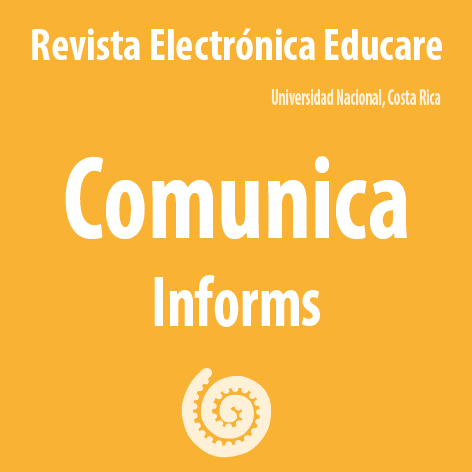Educational Intervention Strategies in the English Language Classroom for Students With Attention-Deficit/Hyperactivity Disorder in Primary Education
DOI:
https://doi.org/10.15359/ree.25-3.20Keywords:
Discourse analysis, learning disabilities, teaching languages, English, foreign language, ADHDAbstract
Introduction. This article analyzes the pedagogy of an ESL teacher in a primary school. Objective. This investigation aims to evaluate the instruction of the ESL teacher, more specifically to analyze the measures implemented with attention-deficit/hyperactivity disorder (ADHD) learners. All these ideas outline a realistic model in the paradigm of teaching and learning English as a second language with ADHD students. Methods. Under a desk research scope, the teacher’s instruction is reviewed, several methodologies are analyzed and put into practice, and the educational practice is modified to adjust the intervention procedures to ensure that all pupils, with or without ADHD, learn ESL. Results. As a result of this study, several techniques are recommended to teach ESL to ADHD students. Discussion. Based on the fact that ADHD is a neurobiological disorder where the impact in every person diverges and the possible problematic areas differ from one to another, several activities and techniques are proposed to provide these individuals with the skills they need to acquire English as a second language. Additionally, this article also proposes two cognitive training self-instruction models for children, with and without ADHD, for oral and written activities in ESL.
References
American Psychiatric Association. (2013). Diagnostic and statistical manual of mental disorders DSM-5 (5.a ed.). American Psychiatric Association Publishing.
Barkley, R. A. (Ed.). (1990). Attention déficit hyperactivity disorder: A handbook for diagnosis and treatment. The Guilford Press.
Barkley, R. A. (2013). Taking charge of ADHD. The complete, authoritative guide for parents (3.a ed.). The Guilford Press.
Brouwer Konyndyk, I. (2011). Foreign languages for everyone. How I learned to teach second languages to students with learning disabilities. Edenridge Press.
Cook, G. (1989). Discourse. Language teaching. A scheme for teacher education. Oxford University Press.
Cooper-Kahn J. y Foster, M. (2013). Boosting executive skills in the classroom. A practical guide for educators. Jossey-Bass.
Ivanov, S. (2009) Discourse Analysis in EFL reading. Malmö högskola. http://dspace.mah.se/bitstream/handle/2043/8453/Sergej%20Ivanov%20degree%20project.pdf?sequenc
Jefatura del Estado. (10 de diciembre de 2013). Ley orgánica 8/2013, de 9 de diciembre, para la mejora de la calidad educativa. Boletín Oficial del Estado, núm. 295. https://www.boe.es/buscar/pdf/2013/BOE-A-2013-12886-consolidado.pdf
Lengel, T. y Kuczala, M. (2010): The kinesthetic classroom. Teaching and learning through movement. Corwin Press.
Lezberg, A. y Hilferty, A. (1978). Discourse analysis in the reading class. TESOL Quarterly, 12(1), 47-55. https://doi.org/10.2307/3585790
McCarthy, M. (1991). Discourse analysis for language teachers. Cambridge University Press.
Monschein, M. (2008). The 50 best games for speech & language development. Hinton House Publishers.
Orjales Yillar, I. (2005). Trastorno por déficit de atención / hiperatividad. 3 TDAH. Estrategias para la mejora de la conducta y el rendimiento escolar del niño con TDAH en el aula. Esquema de Comunicación.
Quintero Gutiérrez del Álamo, F. J. y García Campos, N. (2019). Actualización en el manejo del TDAH. En AEPap (Ed.), Congreso de Actualización Pediatría 2019 (pp. 29-36). Lúa Ediciones 3.0.
https://www.aepap.org/sites/default/files/pags._29-36_actualizacion_en_el_manejo_del_tdah.pdf
Rief, S. F. (2005). How to reach and teach children with ADD/ADHD. Practical Techniques, strategies, and interventions (2.a ed.). Jossey-Bass.
Rinvolucri, M. y Davis, P. (1995). More grammar games: Cognitive, affective and movement activities for EFL students. Cambridge University Press.
Rymes, B. (2016). Classroom discourse analysis. A tool for critical reflection (2.a ed.). Routledge.
Vetter, A., Schieble, M. y Meacham, M. (2018). Critical conversations in english education: Discursive strategies for examining how teacher and student identities shape classroom discourse. National Council of Teachers of English, 50(3), 255-282. http://www.ncte.org/library/NCTEFiles/Resources/Journals/EE/0503-april2018/EE0503Critical.pdf
Downloads
Published
How to Cite
Issue
Section
License
1. In case the submitted paper is accepted for publication, the author(s) FREELY, COSTLESS, EXCLUSIVELY AND FOR AN INDEFINITE TERM transfer copyrights and patrimonial rights to Universidad Nacional (UNA, Costa Rica). For more details check the Originality Statement and Copyright Transfer Agreement
2. REUTILIZATION RIGHTS: UNA authorizes authors to use, for any purpose (among them selfarchiving or autoarchiving) and to publish in the Internet in any electronic site, the paper´'s final version, both approved and published (post print), as long as it is done with a non commercial purpose, does not generate derivates without previous consentment and recognizes both publisher's name and authorship.
3. The submission and possible publication of the paper in the Educare Electronic Journal is ruled by the Journal’s editorial policies, the institutional rules of Universidad Nacional and the laws of the Republic of Costa Rica. Additionally, any possible difference of opinion or future dispute shall be settled in accordance with the mechanisms of Alternative Dispute Resolution and the Costa Rican Jurisdiction.
4. In all cases, it is understood that the opinions issued are those of the authors and do not necessarily reflect the position and opinion of Educare, CIDE or Universidad Nacional, Costa Rica. It is also understood that, in the exercise of academic freedom, the authors have carried out a rogorous scientific-academic process of research, reflection and argumentation thar lays within the thematic scope of interest of the Journal.
5. The papers published by Educare Electronic Journal use a Creative Commons License:













 The articles published by Educare Electronic Journal can be shared with a Creative Commons License:
The articles published by Educare Electronic Journal can be shared with a Creative Commons License: 



